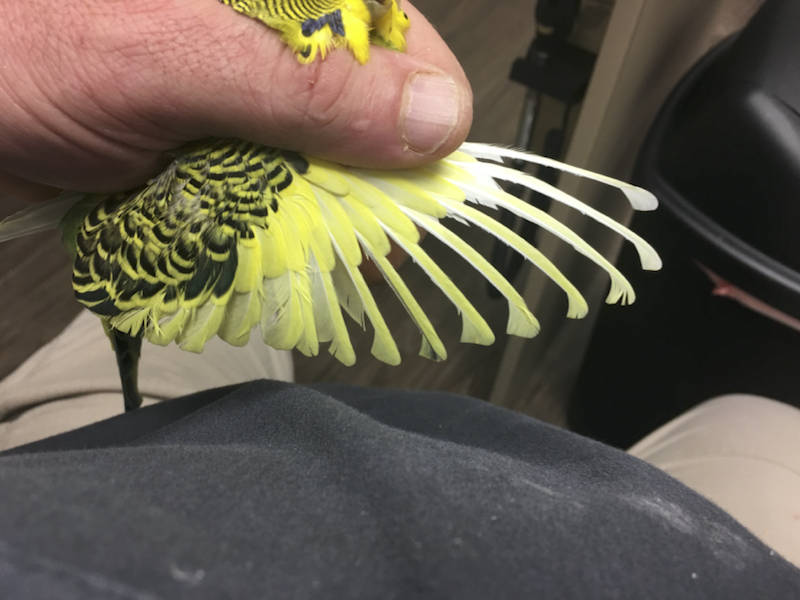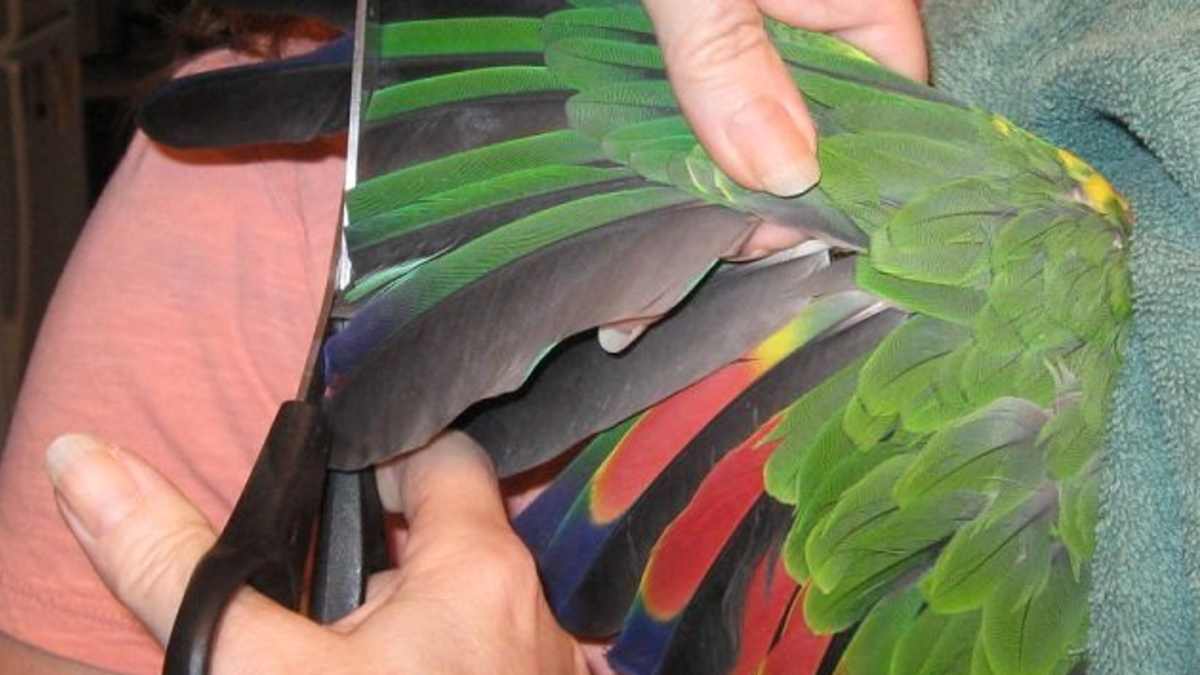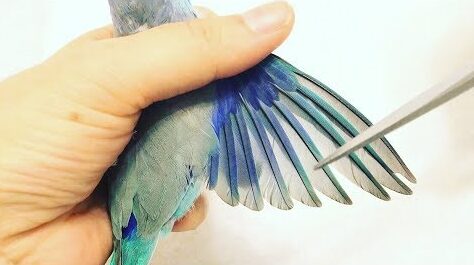Last Updated on March 3, 2024 by Fumipets
How Often Do a Parakeet’s Wings Need to Be Clipped?
It may be difficult to clip a parakeet’s wings. While you don’t want to trim too much or clip the incorrect feathers, you also don’t want your bird to fly away and hurt herself. Your bird will be safer if you know which feathers to cut and how frequently to clip them.

Why Clip Wings
The most fundamental reason for clipping a parakeet’s wings is to keep her from flying away from you, which she may do at first since you’re a total stranger to her. This tiny bird may quickly take to the air, but flying about your house might cause damage, such as smashing into a window or mirror. When a bird is frightened, even the most well-trained bird may yield to instinct and flee to avoid a perceived threat. Though clipping her wings is not a replacement for providing a safe environment, it should be done on a regular basis.

Feathers To Clip And Avoid
Only 4 to 8 of the outermost feathers in the bottom row will be clipped, beginning from the outside in, whether looking at an extended wing from the front or rear of the parakeet. These are the largest primary feathers, which provide forward propulsion. Clipping 10 primary feathers is excessive, and the 11th feather marks the start of the secondary feathers, which should never be clipped.
Blood feathers, the smaller feathers in the next row up, contain dark shafts of blood and will bleed, as their name suggests. If the bird is inadvertently cut, styptic powder should be applied to the wound and the bird should be allowed to recover before clipping again. On each wing, clip an equal amount of main feathers. Window clipping, or leaving the outside two or three feathers intact for show, may give you a false feeling of security since your bird may still be able to fly.

How Often To Clip
Obviously, your parakeet’s wings need to be cut if she’s been flying about to escape you. However, it may be difficult to tell when it’s time to trim the main feathers in between trims. Perch her on your palm a few feet over a carpeted floor as a nice test. The bird will flap her wings and either drop to the floor or glide elegantly away if you lower your arm abruptly yet gently. The feathers of parakeets that can glide from one place to another must be trimmed repeatedly. If you haven’t trimmed your parakeet’s wings in a while and the long primary feathers have grown back, go ahead and trim them, using the secondary feathers as a reference for how far up the primaries to cut.

When Not To Clip
Before their feathers are trimmed, baby parakeets must learn to fly in order to acquire balance and agility. Of course, you should never cut your parakeet’s wings unless you are certain that you can do it swiftly and gently. Always remember to hold the clipping shears away from the bird’s body. If you’re worried if your feathery buddy is agitated or wriggling, see a veterinarian first to have a specialist witness the procedure.
https://www.youtube.com/watch?v=X2ogVDBAVsU


















